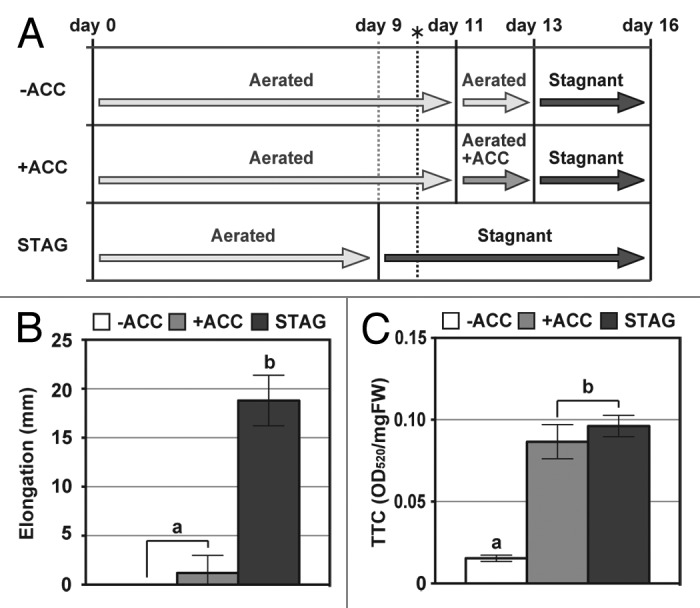
Figure 1. Elongation of adventitious roots and viability of adventitious root tips in wheat seedlings. (A) Growth conditions. Eleven-day-old aerobically-grown wheat seedlings were transferred to aerated nutrient solution with or without 20 μM ACC. After 2 d, these seedlings were transferred to stagnant solution and grown for 3 d. While 9-d-old wheat seedlings were transferred to stagnant solution and grown for 7 d. Stagnant solution contained 0.1% (w/v) dissolved agar and was deoxygenated (dissolved oxygen, < 0.5 mgL−1) prior to use by flushing with N2 gas. The broken line with the asterisk indicates when the emergence of the first adventitious roots was observed (day 10). (B) Elongation of adventitious roots during 3 d growth under stagnant conditions (from day 13 to day 16). (C) Cell viability (TTC reduction) in adventitious roots at 0 to 10 mm from the root tips of the wheat seedlings immediately after 3 d growth under stagnant conditions (day 16). The methods are described in more detail by Yamauchi and colleagues.12 Values are means (n = 5) ± SD. Different lower-case letters denote significant differences among the conditions (P < 0.05, one-way ANOVA and then Tukey’s test for multiple comparisons). -ACC; the -ACC seedlings, +ACC ; the +ACC seedlings, STAG; the STAG seedlings, TTC; 2,3,5-Triphenyltetrazolium chloride.
